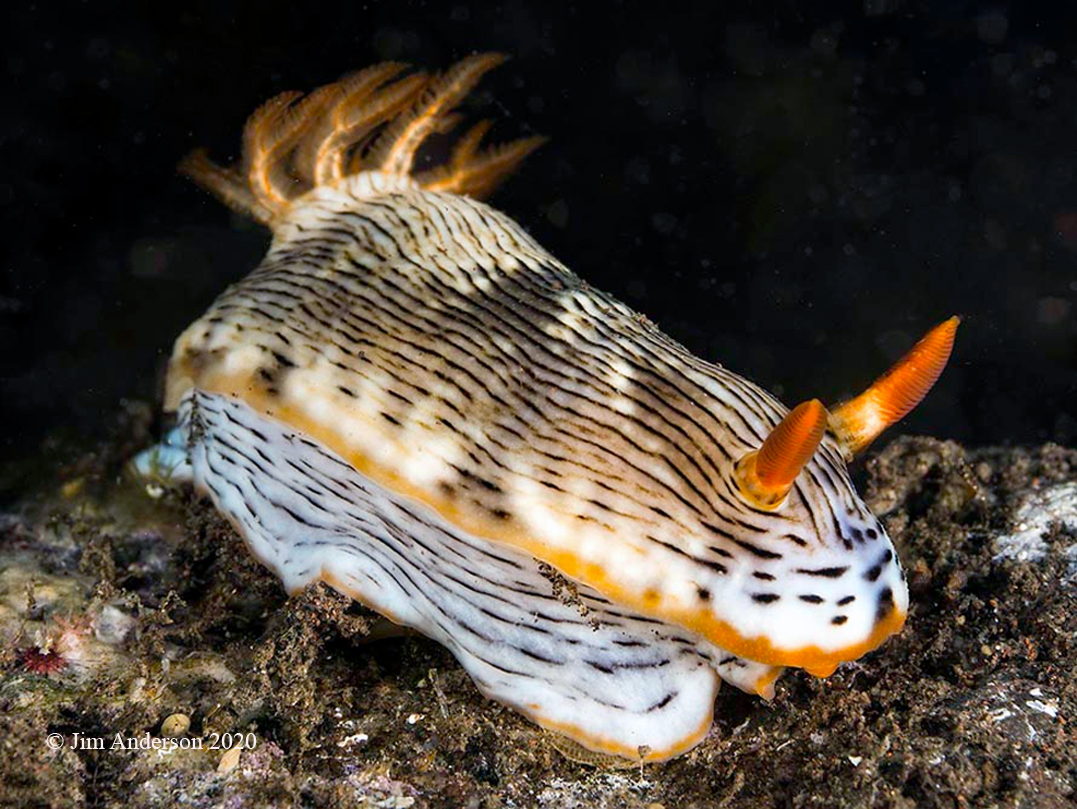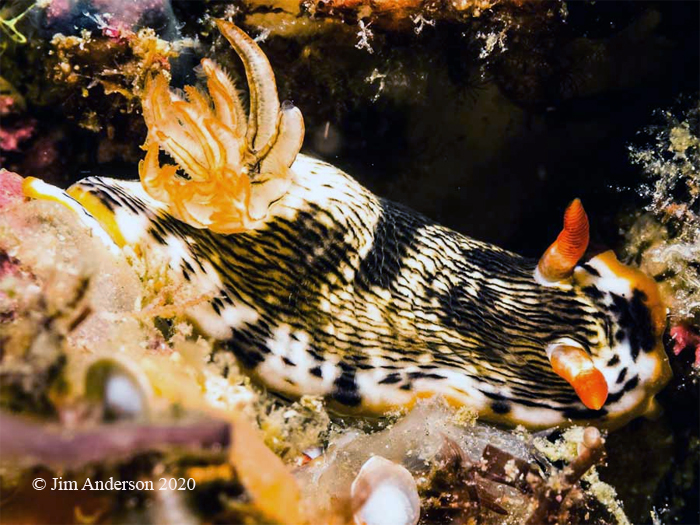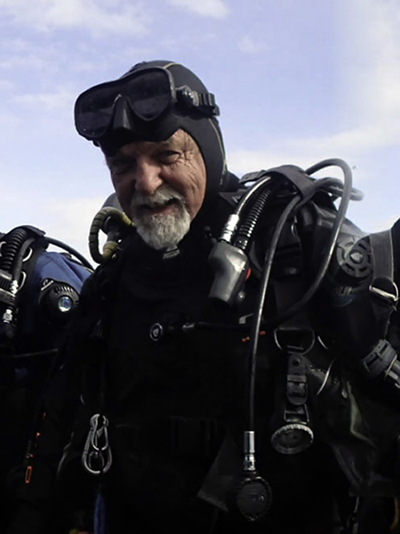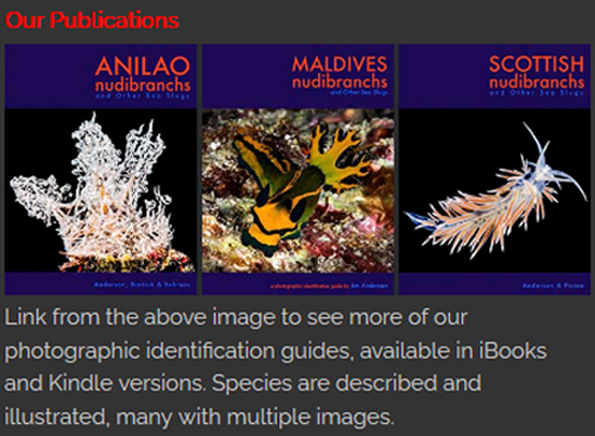 |
Image courtesy of Jim Anderson
Batu Niti Slope, Batu Niti, Bali
Sept. 2017
 |
Chromodoris quagga Bonomo & Gosliner, 2020 Bonomo and Gosliner (2020) is the most recent paper to add to the long list of species belonging to the genus Chromodoris. That brings the genus to 44 species in the Indo-Pacific. The trivial name, quagga, comes from the scientific name of the Plains zebra (Equus quagga). The striped nature of this nudibranch reminded Lynn and Terry of the well-known striped pattern that zebras use for disruptive coloration. Chromodoris quagga is listed as Chromodoris sp. 11 in NSSI 2nd Edition (page 139), among the other thin striped chromodorids. This is a large species reaching 35mm in length. The body is light brown in color with long black stripes across the mantle. The marginal band is a bright yellow that surrounds the entire mantle and there are black spots between the marginal band and the stripes on the mantle. The perfoliate rhinophores are orange with an opaque white band around the bottom and have 16 distinct lamellae. I won't repeat the internal anatomy, but this species has acid secreting mantle glands around the edges of the mantle margin. Among the group having thin stripes, Chromodoris quagga is most similar to C. burni, with brown pigment on the body, a series of white longitudinal lines, and an orange gill and rhinophores that lack white spots. Chromodoris striatella, C. lineolata, and C. balat (to be covered in a future BOW) all have opaque white spots on the rhinophores and gill. |
April 2012
NO - WAIT.
That said - After looking at these links carefully, I began to questions my ID's for these earlier BOW's, and ran to the authors of this new paper for help. Glad I did, as my supposition was correct. The link to C. burni above, according to Terry Gosliner, is actually also Chromodoris quagga and the link to C. striatella is actually the new C. balat, which as I mentioned we will cover in weeks to come. The C. lineolata link is correct.
This paper is a real milestone and should help us sort out these closely related species in the future.
Reference:
LYNN J. BONOMO & TERRENCE M. GOSLINER. 2020. Adding stars to the Chromodoris (Nudibranchia, Chromodorididae) galaxy with the description of four new species. Zootaxa 4819 (3): 401-435.
Dave Behrens
Sammamish, WA 98074
Dec., 2020
Send Dave email at davidwbehrens@gmail.com

An architect who retired from practice in 2011, Jim Anderson is fascinated by the incredibly colourful world that lies just a short distance from the shore around the coast of his home in Scotland. He learned to dive there and very quickly discovered the diversity and extravagance of life that the grey sea does well to disguise. Photography started as a means of recording these sights - to try in some way to let others into this wonderful new world that was opening up. He commenced diving in 1987 and has recorded over 4000 dives, over 2200 around Scotland, mostly with a camera in hand and has developed special skills in capturing images that have been widely published in national diving publications and identification guides. He is the proprietor of nudibranch.org the portal to his extensive nudibranch and other web sites covering his home country and the destinations he has visited in the Philippines, Indonesia, Maldives, Red Sea, Kenya, Ireland and in the Caribbean. He is a 1st Class Examiner with the Scottish Sub Aqua Club and delivers Nudibranch Identification courses on behalf of the UK Marine Conservation Society." Jim has also published several nudibranch ebooks which should be a part of any serious brancher's library. They are quite inexpensive and well worth having! You will need to go to nudibranch.org to order them!
Send Jim mail at jander4454@gmail.com
|

|

|
